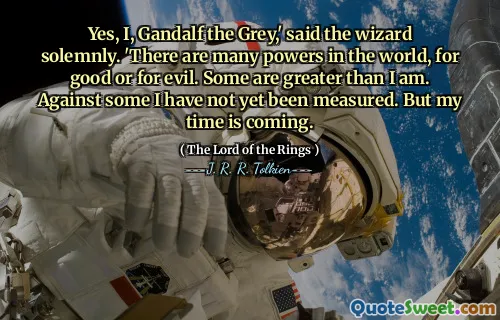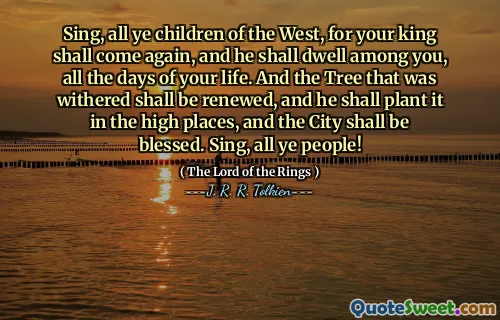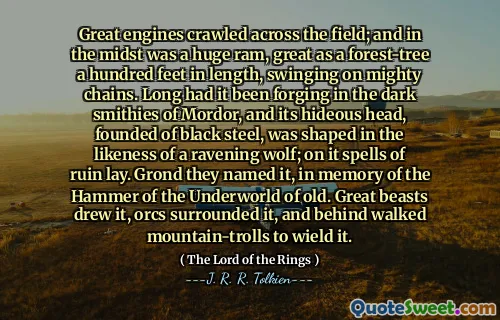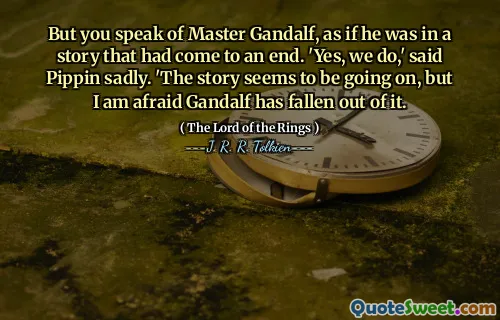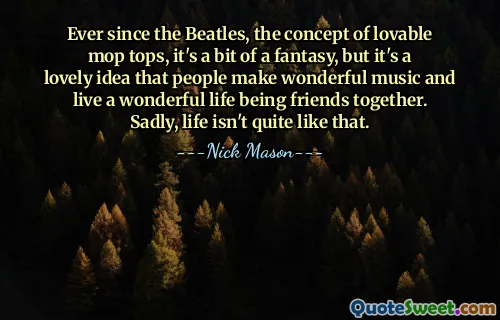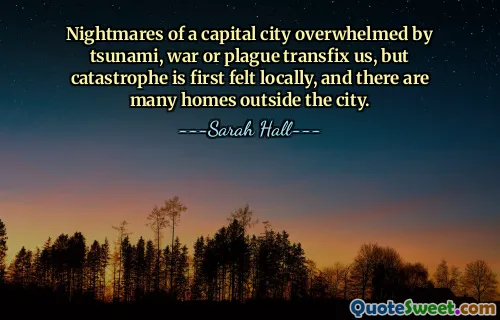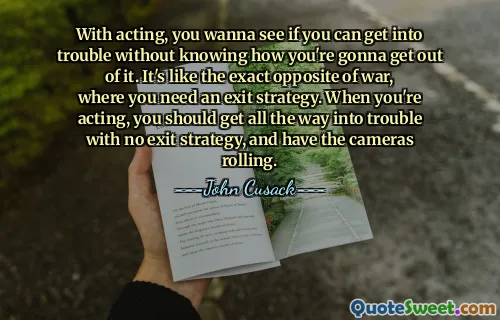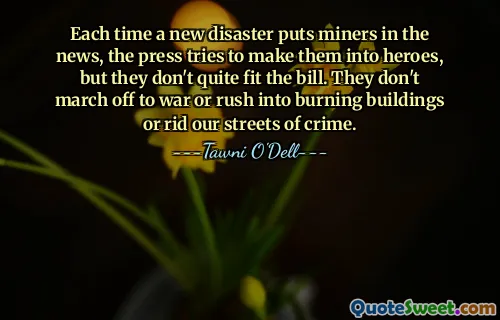
Great engines crawled across the field; and in the midst was a huge ram, great as a forest-tree a hundred feet in length, swinging on mighty chains. Long had it been forging in the dark smithies of Mordor, and its hideous head, founded of black steel, was shaped in the likeness of a ravening wolf; on it spells of ruin lay. Grond they named it, in memory of the Hammer of the Underworld of old. Great beasts drew it, orcs surrounded it, and behind walked mountain-trolls to wield it.
This passage vividly depicts a scene of overwhelming warfare and the relentless march of destructive machinery forged in the dark, sinister depths of Mordor. The description of Grond, the massive battering ram, evokes a sense of awe and terror through its detailed imagery. Its enormous size, comparable to a forest-tree, and the fact that it was forged in Mordor’s shadowy smithies, emphasizes the dark arts and destructive intent behind it. The resemblance of its head to a ravening wolf symbolizes aggression, hunger, and primal savagery, which fits the context of its purpose—to destroy and breach formidable defenses.
The names and descriptions invoke themes of ancient mythologies and history, where a weapon like Grond becomes a force of devastation, much like mythic beasts and legendary tools from bygone eras. The use of words like 'cast spells of ruin' and the description of the orcs, beasts, and mountain-trolls surrounding it paint a picture of an unstoppable, destructive onslaught driven by dark powers. The scene captures not merely a military assault but symbolizes the chaos and brutality characteristic of war, the dark side of industrialization and war machines, and the shadow of malevolence that Mordor personifies.
In the context of literature, this excerpt underscores themes of darkness, destruction, and the relentless nature of evil forces. It also emphasizes how myth and legend can be intertwined with destructive war machinery, creating images that are larger than life, almost apocalyptic. The scene and descriptions serve as metaphors for the destructive capacity of hatred and violence, reminding us of the destructive potential lurking in both myth and reality.
